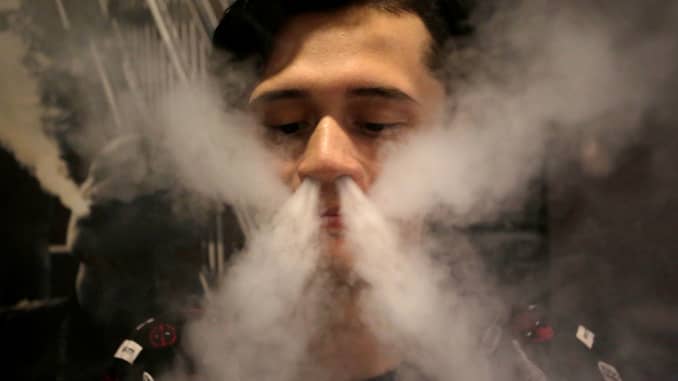Delivering Nicotine : Diagnosing Lung Disease
"I think people will be sensitive and there will be a heightened awareness [resulting from American research linking vaping to lung disease]."
"[The situation in Canada is] like the wild west [currently, for vaping]. What is troubling is the complete absence of any form of regulation."
"[The epidemic of respiratory illnesses now recognized in clusters in the U.S. will result in] a whole new generation of addicts, many of whom will turn to nicotine products."
Dr.Andrew Pipe, Ottawa Heart Institute
"The Government of Canada will continue to monitor all available data sources for indications of similar issues in Canada and will take action, as appropriate, to protect the health and safety of Canadians."
Maryse Durette, spokesperson, Health Canada
"These [lung illnesses discovered in the U.S. with people vaping contaminated THC-based products] are fundamentally different from the nicotine vaping products that millions of people worldwide have been using in place of lethal cigarettes."
David Sweanor, chair, advisory board, Centre for Health Law Policy and Ethics, University of Ottawa
"[Non-smokers and young people should not vape] However, vaping is a less harmful option than smoking for Canadians who already smoke tobacco products."
"Smokers who switch completely to vaping can significantly reduce their exposure to many toxic chemicals found in tobacco smoke."
Health Canada
 |
| Vaping |
In 2017, one quarter of high school students in Ottawa have claimed they experimented with e-cigarettes, and the general consensus is that since then that number has likely increased. According to Robert Schwartz, executive director of the Ontario Tobacco Research Unit, professor at the University of Toronto Dalla Lana School of Public Health, research indicates a clear link between advertising and promotion and e-cigarette use. The current promotion and advertising with JUUL Labs as an example, is geared toward youth.
The colourful, playful packaging, the youth-oriented flavours are all attractants specifically for a young market. And that market is responding with enthusiasm. Research by the Ontario Tobacco Research Unit demonstrates exposure to advertising to be sky-high in Ontario: "Just about everybody is exposed", stated Mr. Schwartz. And with that exposure, rates of vaping among youth who have never before smoked is increasing in Ontario as well as in other provinces, a situation concerning to school officials and health authorities alike.
Evidence of harm from vaping, including its negative effects on the lining of the respiratory system leading to young people accustomed to vaping, coughing and wheezing twice as frequently as non-users is pointed to by Dr. Schwartz. Tens of thousands of young people who have vaped are now becoming addicted to nicotine, thanks to the flavours attractive to teens. Now that the news of hundreds of instances of severe lung disease in the U.S. flagged as linked to vaping has alerted Canadian health authorities, a new spotlight on vaping has emerged.
Most lung illness cases now under investigation in the United States, a death included, involved youth and young adults, leading Canadian health experts like Dr. Andrew Pipe to calling out for more stringent rules on advertising and packaging and promotion of e-cigarettes. In the United States, certain flavours of the JUUL products have been banned on the basis of their appeal to children and teens, whereas no such preventive action has been taken in Canada.
 |
| There is little research into the long-term effects of vaping. |
Dr. Michael Siegel, a professor in the Department of Community Health Sciences at Boston University School of Public Health points out that in each instance of lung disease, oil-based THC and not the alcohol-based liquids in most e-cigarettes has been identified. He takes exception to the U.S. Centres for Disease Control advising youth and young adults to avoid e-cigarettes altogether, insisting this bias places lives at risk by not singling out the specific product causing harm; instead causing general alarm that will result in moving people away from a safer alternative to smoking.
Dr. Pipe, on the other hand is concerned with evidence pointing to some e-cigarette products delivering greater amounts of nicotine into the system than cigarettes. Where a pod -- the system that JUUL uses to deliver nicotine and flavour -- contains the equivalent of 20 cigarettes' nicotine content. With reports of teens vaping an entire pod at a time, this rings alarm bells for him.
 |
A man poses for a picture as he vapes at a vape shop.
Daniel Becerril | Reuters
|
Labels: Canada, Lung Disease, Nicotine, United States, Vaping, Youth





/cdn.vox-cdn.com/uploads/chorus_image/image/62365181/GettyImages_913054862.0.jpg)
:no_upscale()/cdn.vox-cdn.com/uploads/chorus_asset/file/13436291/Screen_Shot_2018_11_13_at_10.41.03_AM.png)
















